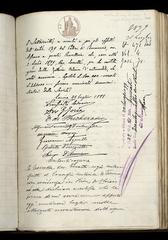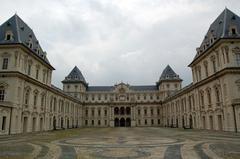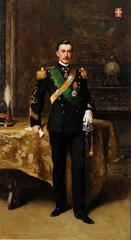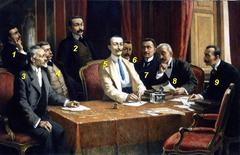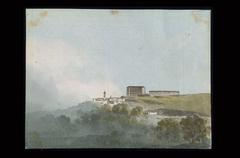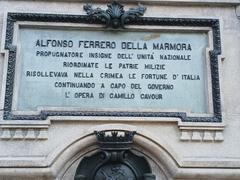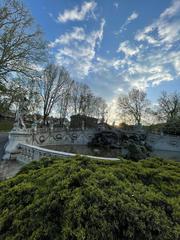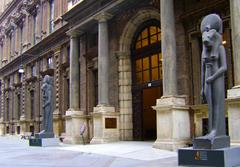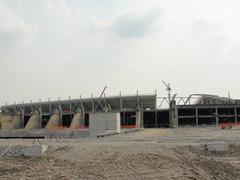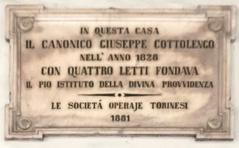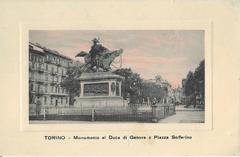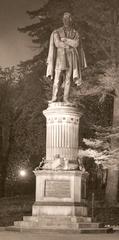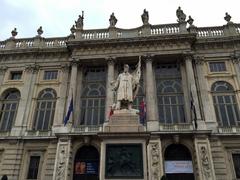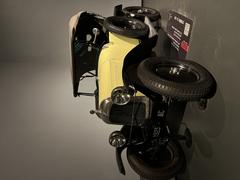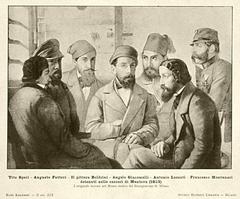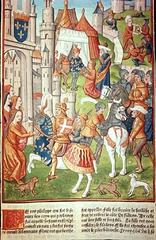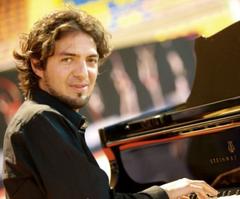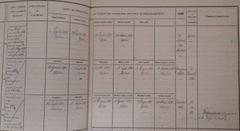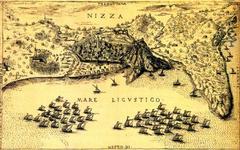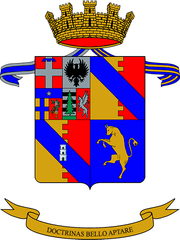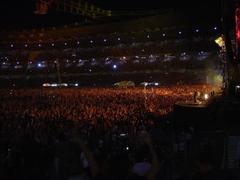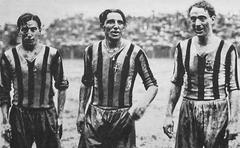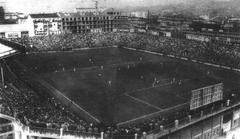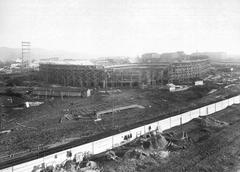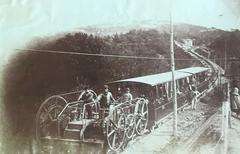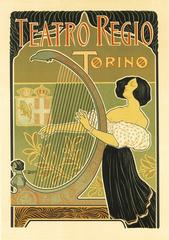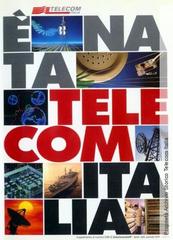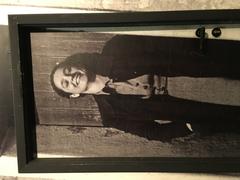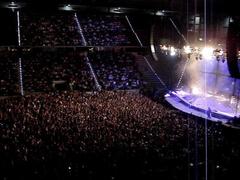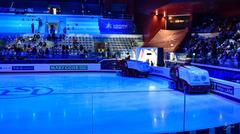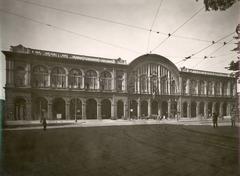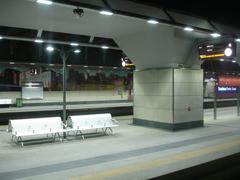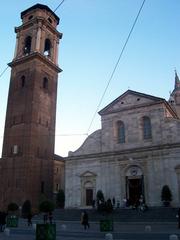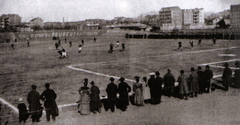
Church of San Lorenzo, Turin: Visiting Hours, Tickets, and Historical Significance
Date: 04/07/2025
Introduction
Nestled in Turin’s historic heart, the Church of San Lorenzo (Chiesa di San Lorenzo) is a Baroque masterpiece that seamlessly marries dynastic history, religious symbolism, and architectural innovation. Commissioned by Duke Emanuele Filiberto of Savoy as a votive offering for his 1557 victory at the Battle of Saint-Quentin, the church stands as a testament to the House of Savoy’s power, faith, and enduring legacy in Turin (sanlorenzo.torino.it; angolitorino.com). Its discreet exterior preserves the harmony of Piazza Castello, while Guarino Guarini’s dazzling interior features a centralized octagonal plan and a dome that floods the space with symbolic, ethereal light (edificisacri.it; susanklaiber.wordpress.com).
This guide provides comprehensive information for visitors, including practical details on opening hours, ticketing, accessibility, guided tours, and nearby attractions. It also explores the church’s historical and religious importance, unique architectural features, and special phenomena such as the equinox light display. Whether you are an architecture enthusiast, a history buff, a pilgrim, or an inquisitive traveler, this resource will help you fully appreciate one of Turin’s most remarkable sites (renatoprosciutto.com; turismotorino.org).
Historical Overview
Origins and Foundation
The church’s roots trace back to August 10, 1557, when Emanuele Filiberto of Savoy reclaimed his domains from French occupation at the Battle of Saint-Quentin—coinciding with the feast of Saint Lawrence. As an act of gratitude, he vowed to dedicate a church to Saint Lawrence in Turin, which would later become the capital of Savoy (sanlorenzo.torino.it). The original medieval church near the city walls was the first seat of the Order of Saint Maurice and Lazarus and hosted the Holy Shroud after its transfer to Turin in 1578.
Baroque Transformation
Construction of the current church began in 1634 under Carlo di Castellamonte and progressed slowly until 1668, when the Theatine priest-architect Guarino Guarini was commissioned to design a new structure. Guarini’s innovative approach culminated in the dazzling dome and centralized plan that define San Lorenzo today. The church was inaugurated in 1680 and completed in 1687 (spottinghistory.com; girlsgottadrink.com).
Restoration and Preservation
San Lorenzo has undergone several restoration phases, especially in the 19th and 20th centuries, with significant post-World War II repairs. Ongoing efforts ensure the conservation of its artistic and architectural heritage (sanlorenzo.torino.it).
Architectural and Artistic Highlights
Exterior: Urban Harmony
San Lorenzo’s understated façade blends seamlessly into Piazza Castello, avoiding any competition with the adjacent Royal Palace. This subtlety is a deliberate statement of both religious humility and political acumen (edificisacri.it).
Interior: Guarini’s Vision
Guarini’s octagonal plan and dome are tour de forces of Baroque engineering. The dome’s intricate ribs and star-shaped designs, pierced by eight windows, create dramatic lighting effects and a sense of transcendence (edificisacri.it). The high altar, chapels, and furnishings—including the Indian walnut pulpit and altarpiece by Franceschini—showcase the era’s leading artists. The use of polychrome marbles and the interplay of light and geometry evoke profound spiritual symbolism (angolitorino.com; girlsgottadrink.com).
Symbolism and Light
Guarini’s design employs the number eight—a symbol of resurrection and perfection—throughout the building. The dome’s geometry and the strategic use of light represent the soul’s ascent to the divine. During the equinox, sunlight illuminates hidden artworks, creating a mystical experience (angolitorino.com).
Royal Connections
A gallery links San Lorenzo to the Royal Palace, offering the House of Savoy private access to religious ceremonies—a clear illustration of the interdependence between church and state in Turin’s history.
Religious and Cultural Significance
San Lorenzo served as the House of Savoy’s private chapel and was the site of the first public exhibition of the Holy Shroud in 1578, celebrated by San Carlo Borromeo (turismotorino.org). Today, it remains an active place of worship, hosting daily Masses and major liturgical events, particularly during the Holy Shroud ostensions.
The church is also a vibrant cultural hub, home to conferences, concerts, and exhibitions organized by the San Lorenzo Cultural Center and the Friends of San Lorenzo Association (sanlorenzo.torino.it). A memorial plaque on the façade and daily chimes at 5:15 PM honor Italian soldiers lost during the WWII Russian campaign (angolitorino.com).
Visiting Information
Location
- Address: Via Palazzo di Città, 4 – 10122 Torino, Italy
- Phone: +39 011 4361527
- Website: San Lorenzo Church Turin
The church is centrally located off Piazza Castello, within walking distance of major landmarks like the Royal Palace and Turin Cathedral. It is easily accessible by metro (Porta Nuova), tram, bus, taxi, or rideshare (Renato Prosciutto).
Visiting Hours
- General Hours: Daily from 8:30 AM to 12:00 PM and 3:30 PM to 6:30 PM.
- Feast Days and Special Events: Extended hours; check the official website for updates.
- Note: The church may close for a few hours in the early afternoon and on certain holidays.
Tickets and Admission
- Entry: Free of charge.
- Donations: Appreciated, supporting preservation efforts.
- Guided Tours & Audio Guides: Available for a fee; advance booking is advised during peak seasons and Holy Shroud displays.
Accessibility
- The church is wheelchair accessible, with ramps and accessible restrooms.
- Due to the historic structure, some areas have uneven flooring. Call ahead for assistance: +39 011 4361527.
Guided Tours and Interpretation
While there are no regular in-house guided tours, San Lorenzo is featured on most Baroque architecture and Savoy history walking tours offered by local operators. Audio guides and printed materials are available on-site and at local tourist centers.
Special Features and Events
Equinox Light Phenomenon
At noon on the spring and autumn equinoxes, sunlight penetrates the church to illuminate specific chapels and frescoes—a celebrated event that draws crowds interested in art, science, and spirituality (Renato Prosciutto).
Religious Services
Daily Masses and special liturgies are held, especially during major Catholic holidays and Holy Shroud ostensions. Visitors are welcome but should be mindful of ongoing services.
Dress Code and Visitor Etiquette
- Modest attire is required: cover shoulders and knees, and remove hats.
- Maintain silence, especially during services.
- Photography is permitted without flash outside of services; always check for posted restrictions.
Nearby Attractions
- Piazza Castello: The city’s main square, surrounded by palaces and cafes.
- Royal Palace of Turin (Palazzo Reale): The Savoy residence.
- Turin Cathedral: Home to the Holy Shroud.
- Museo Egizio: Renowned Egyptian Museum.
- Numerous cafes, restaurants, and shops are nearby for refreshments and souvenirs (The Best of Turin).
Best Times to Visit
Spring (April–May) and autumn (September–October) offer mild weather and vibrant city events. Winter visits are quieter, ideal for peaceful contemplation. Arrive early or late in the day to avoid crowds (Lonely Planet).
Visitor Tips
- Combine with other sites: Plan to visit nearby attractions for a full day itinerary.
- Check events calendar: For equinox phenomena and special concerts.
- Weather: Bring an umbrella in spring/autumn; Turin weather can be unpredictable.
- Safety: The area is generally safe; take standard precautions.
Frequently Asked Questions (FAQ)
Q: What are the visiting hours?
A: Generally 8:30 AM–12:00 PM and 3:30 PM–6:30 PM daily; check for changes during holidays or events.
Q: Is there an admission fee?
A: No, entry is free; donations are appreciated.
Q: Are guided tours available?
A: Yes, via local operators; audio guides and printed materials are available on-site.
Q: Is the church accessible to people with disabilities?
A: Yes, with ramps and assistance; some uneven surfaces may exist.
Q: Can I take photos?
A: Yes, without flash and outside of services; check signage for restrictions.
Q: How do I reach San Lorenzo?
A: Centrally located in Piazza Castello; accessible by public transport, taxi, or on foot.
Visuals and Media
Enhance your experience with virtual tours and high-resolution images available on the official website. Recommended visuals include photos of the dome and interior, the Piazza Castello façade, and detailed shots of the marble decorations. Use alt tags like “San Lorenzo Church Turin visiting hours” and “Royal Church of Saint Lawrence tours” for accessibility and SEO.
Additional Resources
- San Lorenzo Torino Official Website
- Edifici Sacri
- Angoli Torino
- Renato Prosciutto
- Susan Klaiber Blog
- Lonely Planet
- The Best of Turin
Summary and Recommendations
The Church of San Lorenzo in Turin is a multifaceted marvel, uniting Baroque artistry, dynastic symbolism, and spiritual vitality. Guarino Guarini’s design and the church’s ongoing liturgical and cultural activities make it a living monument. Free entry, accessibility, and proximity to other major sites make it an essential stop for any visitor to Turin. For the latest information on hours, tours, and events, consult the official website and trusted travel resources.
Plan your visit, download the Audiala app for guided audio tours, and follow us on social media for updates and tips. Discover the timeless beauty and enduring significance of this Baroque treasure—a highlight of Turin’s historical landscape.





